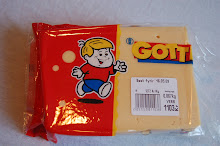Danielle Galietti
CAP – October 13
6-7pm
Fahamu Pecou
Visiting artist Fahamu Pecou spoke at the University of Delaware on October 13th. He began his lecture by talking about the plight of the artist post graduation. He noted how he had made up a bunch of packets containing his resume and samples of his work, and then sent them out to a bunch of galleries. He figured that in no time he would be receiving calls in regards to his work. However Pecou became worried when none of these venues had called him back and contemplated on whether it was because they were unable to pronounce his name.
This incident provoked Fahamu to start thinking about why the visual artist was not advertised in a way similar to the hip-hop artist. This questioning led him to create his own marketing campaign “Fahamu Pecou Is The Shit”. He started with viral advertisements posting flyers throughout his town. He kept the flyers extremely vague in regards to the event however clearly stating a time and place. He was interested in seeing how many people would show, or if anyone would show up to this “mystery” event. On the day of the event Fahamu remained low key and hung out at the bar until midnight. While standing at the bar a gentleman approached him and inquired about the man that was advertised about in the flyer. Fahamu played innocent, shrugging his shoulder back at the man. When midnight struck, the stage was illuminated to reveal a sole easel. As the Dj began to spin, Pecou walked on stage and began to paint. As the night progressed people began to drink and even dance, enjoying the atmosphere. One participant remarked, “He IS the shit!”
Fahamu continued his advertisement campaign by distributing T-shirts with his image and the words “Fahamu Pecou is the shit”. He also began to widen his source and means of distribution. Pecou created fake postcards advertising the magazine “Contemporaneo”. He placed these post cards into various magazines at bookstores; soliciting people who found them to fill out and send the postcard back in order to receive a free copy. He contrived this magazine to feature his image on the cover, as well as a couple of back copies so to make it more believable. He used his uncle’s address in Brooklyn in order to make the request appear more legitimate. Not long after, this next wave of advertisements were put into the public, Pecou received a call from his slightly perturbed uncle inquiring about why so he was receiving all these cards. His interest in this project spawned from the questioning of how people were chosen to be on the cover of magazines.
One of his most interesting pieces was a performance that was the result of a reactionary response. On the day of the opening of an exhibition at the Hyde Museum, Pecou was at the space finishing installing his work, when he was asked to not display. This last minute decision to take Pecou out of the show was based on a thought that they might not have enough space to show all the artists. After all his hard work in preparation for the show, Pecou fought back and argued for his work to be displayed in the show. Fortunately the directors gave in and allowed for him to show his work. However this incident upset Pecou so much that he decided not only to be in the show, but rather “to take over the show”. Pecou arrived to the show in a limousine, accompanied by bodyguards. Since he had known some of the security staff at the Hyde Museum, he had arranged for them to escort him into the building, meanwhile cutting the line, which extended around the corner of the building. As he entered the exhibition space, dressed to the nines replete with his “eye candy” at his side, Fahamu began his performance. He refused to talk to anyone, and if approached his bodyguard would step in front and hand the person Pecou’s business card. Because of this flamboyant procession into the museum, Pecou immediately caught people’s attention. People began to whisper and inquire as to who this man was. His performance was so success that in a newspaper article discussing the show, only one paragraph was actually dedicated to the show, whereas the rest focused on Fahamu.
Borrowing imagery and taking cues from mass media, Pecou continued with these ostentatious displays gaining much recognition. At one art fair in Chicago, Pecou set up his pavilion to resemble a VIP lounge area of a nightclub. Not only did he have black velvet ropes surrounding his space, but he acquired a high end brand of vodka to sponsor it. Because of the way he advertised himself, Pecou’s work sold out by the end of the day, where as other artists did not even sell a single piece.
Monday, October 26, 2009
Subscribe to:
Post Comments (Atom)


No comments:
Post a Comment